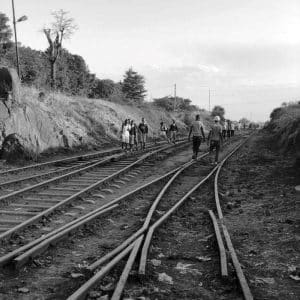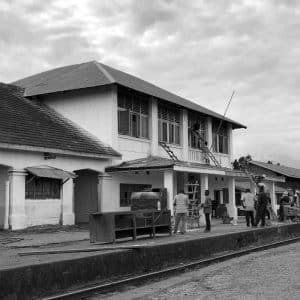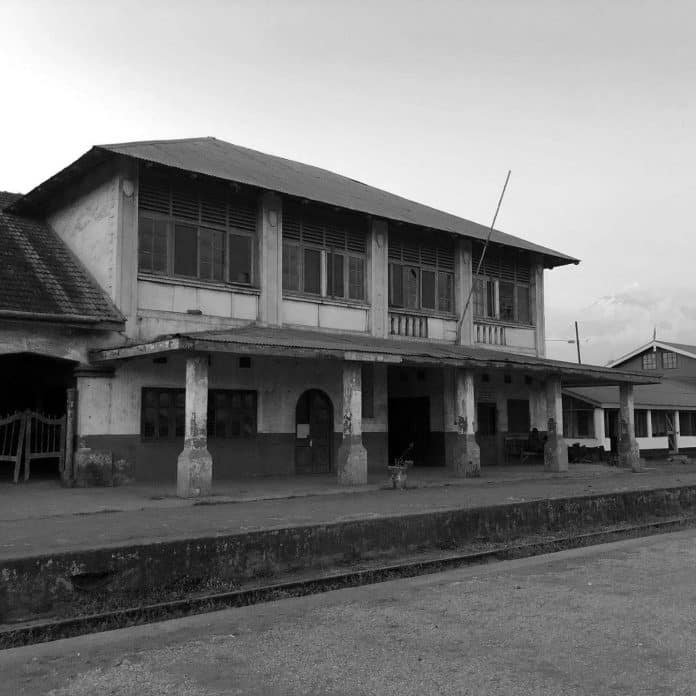Introduction to Same and the Tanga Line
Nestled amidst the lush, verdant landscapes of northeastern Tanzania, the town of Same stands as a gateway to the captivating Tanga Line, a historic railway route that has been a vital transportation artery for the region for decades. As you embark on your journey through this enchanting corner of Tanzania, you’ll discover a destination that seamlessly blends natural splendor, cultural richness, and a unique historical legacy.
In this comprehensive guide, we’ll delve into the captivating world of Same, exploring its role as a mountain gateway along the Tanga Line, and unveiling the myriad of experiences that await the intrepid traveler. From the town’s breathtaking natural attractions to its vibrant cultural heritage, we’ll uncover the hidden gems that make Same a must-visit destination on your Tanzanian adventure.
Historical Significance of Same as a Mountain Gateway
Same’s strategic location, perched on the slopes of the Usambara Mountains, has long made it a vital hub for transportation and commerce in the region. The town’s origins can be traced back to the late 19th century, when the German colonial administration recognized the importance of establishing a mountain gateway to facilitate the movement of goods and people between the coast and the interior.
The construction of the Tanga Line, a narrow-gauge railway that connected the port city of Tanga to the hinterlands, marked a significant turning point in Same’s history. This engineering marvel, completed in 1912, not only transformed the town into a bustling transportation hub but also paved the way for the region’s economic and social development.
As the Tanga Line snaked its way through the rugged terrain, Same became a crucial stopover point, where travelers and cargo would disembark, allowing for the distribution of goods and the exchange of ideas. This strategic position, coupled with the town’s natural beauty and temperate climate, soon attracted a diverse population, including traders, administrators, and adventurers, all drawn to the promise of opportunity and discovery.
The Tanga Line: A Brief Overview

The Tanga Line, a remarkable feat of colonial-era engineering, stretches approximately 300 kilometers from the coastal town of Tanga to the town of Moshi, nestled at the base of the iconic Mount Kilimanjaro. This narrow-gauge railway, constructed between 1893 and 1912, was initially designed to facilitate the transportation of agricultural products, such as sisal and coffee, from the interior to the coast.
Over the years, the Tanga Line has evolved, adapting to the changing needs of the region. Today, it continues to serve as a vital transportation link, connecting communities, facilitating trade, and offering travelers a unique and scenic journey through the heart of northeastern Tanzania.
As you ride the Tanga Line, you’ll be treated to a mesmerizing panorama of lush, rolling hills, verdant forests, and towering mountain peaks. The train’s winding route, which navigates through dramatic gorges and across sweeping valleys, offers a captivating window into the region’s diverse landscapes and rich cultural heritage.
Exploring Same’s Natural Beauty and Attractions
Beyond its historical significance, Same is a true gem for nature enthusiasts, boasting a wealth of natural wonders that are sure to captivate your senses. The town’s strategic location, nestled between the rugged Usambara Mountains and the gentle slopes of the Pare Mountains, provides a stunning backdrop for a myriad of outdoor adventures.
One of the town’s most renowned natural attractions is the Chome Forest Reserve, a lush, biodiverse haven that is home to a diverse array of flora and fauna. Venture into the forest’s winding trails and you may be rewarded with sightings of the elusive Kilimanjaro colobus monkey, the majestic African crowned eagle, and a kaleidoscope of vibrant butterflies.
For those seeking a more adrenaline-fueled experience, the Pare Mountains offer a playground for hikers and trekkers. Challenge yourself with a challenging ascent to the summit of Mount Njiro, where you’ll be treated to panoramic vistas that stretch as far as the eye can see. Along the way, keep an eye out for the region’s unique wildlife, including the graceful klipspringer antelope and the ever-vigilant Verreaux’s eagle.
Back in the town of Same, be sure to explore the captivating Kifaru Waterfalls, a cascading wonder that plunges over 60 meters into a serene pool below. This natural spectacle is not only a visual delight but also a popular spot for swimming and picnicking, offering a refreshing respite from the day’s adventures.
Same’s Cultural Heritage and Traditions
Alongside its natural wonders, Same is a tapestry of rich cultural heritage, woven together by the diverse communities that have called this region home for generations. As you explore the town, you’ll be immersed in a vibrant tapestry of traditions, customs, and artistic expressions that reflect the unique identity of the Pare and Sambaa peoples.
One of the most captivating aspects of Same’s cultural landscape is its traditional architecture. Wander through the town’s winding streets and you’ll be greeted by a harmonious blend of colonial-era buildings and the iconic thatched-roof huts of the local communities. Step inside these structures and you’ll be transported to a world where time seems to stand still, with intricate carvings, vibrant textiles, and the echoes of age-old stories.
The cultural traditions of Same are also brought to life through the region’s vibrant arts and crafts. Visit the local markets and you’ll find an abundance of handcrafted treasures, from intricately woven baskets and pottery to intricate wood carvings and vibrant textiles. These artisanal creations not only showcase the skilled craftsmanship of the local artisans but also serve as a window into the rich cultural heritage of the Pare and Sambaa peoples.
Activities and Adventures in Same
As a gateway to the Tanga Line and the surrounding natural wonders, Same offers a diverse array of activities and adventures to suit every traveler’s interests. Whether you’re seeking a thrilling outdoor experience or a deeper immersion in the local culture, this captivating town has something to delight and inspire you.
For the nature enthusiast, Same provides ample opportunities to explore the great outdoors. Embark on a guided hike through the Chome Forest Reserve, where you’ll have the chance to spot a variety of endemic bird species and marvel at the towering trees that tower above. Alternatively, challenge yourself with a trek to the summit of Mount Njiro, where you’ll be rewarded with breathtaking vistas of the surrounding Pare Mountains.
Adrenaline-seekers will find their thrills in the town’s adventure offerings. Strap on your harness and tackle the exhilarating rock-climbing routes that dot the Usambara Mountains, or try your hand at mountain biking along the region’s winding trails. For a more serene experience, consider a guided kayaking or canoeing expedition on the serene waters of the Pangani River, where you can spot a variety of aquatic wildlife.
Cultural immersion is also a highlight of a visit to Same. Engage with the local artisans and learn the intricate techniques behind the creation of traditional crafts, such as basket weaving and pottery. Attend a performance of traditional music and dance, and witness the vibrant rhythms and movements that have been passed down through generations.
Getting to Same: Transportation Options and Routes
Accessing the town of Same is a relatively straightforward process, with a variety of transportation options available to suit your travel preferences and needs.
By Train: The Tanga Line, the historic narrow-gauge railway that connects the coastal town of Tanga to the interior, is a popular and scenic way to reach Same. Hop aboard the train and enjoy the stunning vistas as you wind your way through the lush landscapes of northeastern Tanzania.
By Road: For those who prefer the flexibility of self-drive or private transportation, Same can be easily accessed by road. The town is situated along the B1 highway, which connects it to major cities like Tanga and Moshi. Alternatively, you can arrange for a private transfer or join a guided tour that includes transportation.
By Air: While Same does not have its own airport, the nearby town of Moshi is home to Kilimanjaro International Airport, which serves as a gateway to the region. From the airport, you can arrange for a private transfer or join a tour that includes transportation to Same.
Regardless of your chosen mode of transportation, the journey to Same is an integral part of the experience, offering a glimpse into the diverse landscapes and rich cultural tapestry of northeastern Tanzania.
Accommodation Options in Same
As a growing destination for travelers, Same offers a range of accommodation options to suit a variety of budgets and preferences. From cozy guesthouses to luxurious eco-lodges, you’ll find a comfortable and welcoming place to rest your head during your exploration of the town and the surrounding Tanga Line region.
Budget Accommodations: For the budget-conscious traveler, Same boasts a selection of affordable guesthouses and hostels that provide clean, comfortable rooms and basic amenities. These options are ideal for solo adventurers, backpackers, and those seeking a more authentic, local experience.
Midrange Accommodations: If you’re looking for a bit more comfort and amenities, Same offers a range of midrange hotels and lodges that cater to families, couples, and independent travelers. These establishments often feature en-suite bathrooms, air conditioning, and on-site dining options, ensuring a pleasant and relaxing stay.
Luxury Accommodations: For the ultimate in comfort and indulgence, Same is home to a growing number of eco-lodges and high-end resorts that offer a truly immersive experience. These luxurious retreats seamlessly blend modern amenities with the natural beauty of the surrounding landscapes, providing guests with a tranquil and rejuvenating escape.
Regardless of your budget or preferences, the hospitality of the local community in Same is sure to make your stay a memorable one, as you immerse yourself in the town’s rich cultural heritage and natural wonders.
Recommended Itineraries for Exploring Same and the Tanga Line
To make the most of your visit to Same and the captivating Tanga Line, we’ve curated a few recommended itineraries that showcase the best of this enchanting region:
- The Tanga Line Explorer (3 days):
- Day 1: Arrive in Same and explore the town’s cultural heritage and natural attractions, including the Kifaru Waterfalls and the Chome Forest Reserve.
- Day 2: Embark on a scenic train journey along the Tanga Line, taking in the stunning vistas and stopping at various points of interest along the way.
- Day 3: Venture into the Pare Mountains, tackling a challenging hike to the summit of Mount Njiro for panoramic views.
- Immersive Cultural Experience (5 days):
- Day 1-2: Delve into the rich cultural heritage of Same, visiting local markets, artisan workshops, and traditional villages to gain a deeper understanding of the Pare and Sambaa peoples.
- Day 3-4: Explore the natural wonders of the region, including the Chome Forest Reserve and the Kifaru Waterfalls, with opportunities for hiking, birdwatching, and wildlife spotting.
- Day 5: Embark on a scenic train journey along the Tanga Line, soaking in the stunning landscapes and learning about the railway’s historical significance.
- Adventure-Packed Getaway (7 days):
- Day 1-2: Arrive in Same and immerse yourself in the town’s outdoor activities, such as rock climbing, mountain biking, and kayaking on the Pangani River.
- Day 3-4: Venture into the Pare Mountains, tackling challenging hikes and treks to the region’s most breathtaking viewpoints.
- Day 5-6: Explore the Chome Forest Reserve, engaging in guided wildlife safaris and birdwatching excursions.
- Day 7: Conclude your adventure with a scenic train journey along the Tanga Line, reflecting on the memories you’ve made in this captivating corner of Tanzania.
Whichever itinerary you choose, you’re sure to be captivated by the natural beauty, cultural richness, and historical significance that make Same and the Tanga Line a truly remarkable destination.
Tips for Visiting Same and Making the Most of Your Trip

To ensure you have a seamless and unforgettable experience in Same and along the Tanga Line, consider the following tips:
- Plan Ahead: Research the region thoroughly and make advance reservations for your accommodation, transportation, and any activities or experiences you’d like to enjoy. This will help you make the most of your time and avoid any last-minute hiccups.
- Pack Wisely: Bring comfortable, breathable clothing, sturdy hiking boots, and layers to accommodate the region’s varying temperatures and weather conditions. Don’t forget sun protection, insect repellent, and any necessary personal items.
- Embrace the Local Culture: Engage with the local community, learn about their traditions and customs, and support the region’s artisans and small businesses. This will not only enhance your understanding of the destination but also contribute to the local economy.
- Be Environmentally Conscious: Respect the fragile natural environments you’ll be exploring, such as the Chome Forest Reserve, and adhere to any guidelines or regulations to ensure the preservation of these precious ecosystems.
- Stay Flexible: Be prepared for the unexpected, as travel in this region can sometimes involve unexpected delays or changes. Maintain a positive attitude and be open to embracing the spontaneity that often comes with exploring off-the-beaten-path destinations.
- Consult Local Guides: Consider hiring a local guide or joining a guided tour to gain deeper insights into the region’s history, culture, and natural wonders. These knowledgeable individuals can provide invaluable information and help you navigate the area with ease.
By keeping these tips in mind, you’ll be well on your way to an unforgettable and enriching journey through the captivating town of Same and the stunning landscapes of the Tanga Line.
Conclusion: Same – A Hidden Gem on the Tanga Line
As you bid farewell to the enchanting town of Same and the captivating Tanga Line, you’ll undoubtedly carry with you a newfound appreciation for the natural beauty, cultural richness, and historical significance that make this region of Tanzania so truly special.
Whether you’ve spent your time immersed in the town’s vibrant traditions, explored the stunning natural landscapes, or embarked on thrilling adventures, your experiences in Same have undoubtedly left an indelible mark on your heart and mind.
As you plan your next Tanzanian adventure, be sure to keep Same and the Tanga Line high on your list of must-visit destinations. This hidden gem, nestled amidst the verdant hills and towering peaks, offers a truly unique and unforgettable travel experience – one that will leave you eager to return and uncover even more of its captivating wonders.
For more articles related to Railway and train travel Tanzania, click here!

































